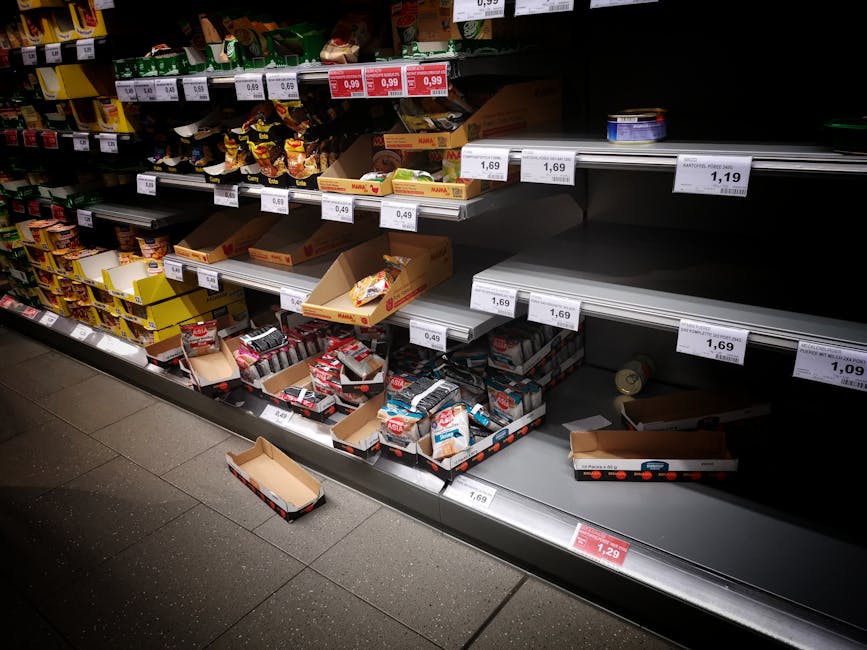A primary mechanism involves increased production costs. When supply chains are disrupted whether through natural disasters, geopolitical instability, pandemics, or logistical bottlenecks the availability of raw materials, intermediate goods, and finished products diminishes. This scarcity immediately drives up their prices. Manufacturers facing higher input costs have little choice but to pass these increased expenses onto consumers in the form of higher prices for finished goods and services. This cost-push inflation represents a direct link between supply chain problems and rising price levels. The impact is particularly pronounced for industries heavily reliant on global supply chains, where disruptions in one region can quickly cascade across the world, exacerbating price increases. For example, the semiconductor shortage in 2021 significantly impacted the automotive industry, leading to higher car prices worldwide.
Beyond direct cost increases, disruptions create significant uncertainty. Businesses struggle to predict future input costs and availability, forcing them to adopt risk-management strategies that often involve higher prices. This precautionary pricing reflects the uncertainty surrounding future supply and acts as a buffer against potential losses from shortages. Moreover, uncertainty discourages investment and expansion, limiting the capacity to meet increased demand. This capacity constraint, even if temporary, contributes to further price increases as demand outstrips supply. The resulting inflation can be particularly stubborn, as businesses hesitate to lower prices even when supply chain issues ease, fearing a return to scarcity.
Labor markets also feel the ripple effect. Supply chain disruptions can lead to job losses in affected industries, particularly those reliant on just-in-time inventory management. However, simultaneously, specific sectors may experience labor shortages as demand surges in areas related to resolving the disruption. For example, transportation and logistics companies faced acute labor shortages during the height of the pandemic-induced disruptions, driving up wages and further contributing to inflationary pressures. This wage-push inflation adds another layer to the complex relationship between supply chain vulnerabilities and rising prices. The overall impact on employment is intricate and depends on the nature and scope of the disruption, as well as the government’s response.
Furthermore, supply chain disruptions frequently amplify existing inflationary pressures. If an economy is already experiencing inflationary trends due to factors like increased consumer demand or expansionary monetary policy, supply chain problems can exacerbate the situation. The added scarcity driven by disruptions interacts with already elevated demand, pushing prices even higher. This interaction can create a vicious cycle, where higher prices lead to further demand-pull inflation, making it challenging for central banks to control inflation through conventional monetary policy tools.
The impact of supply chain disruptions on inflation is not uniform across all sectors or economies. The severity and duration of the disruption, the elasticity of demand for the affected goods and services, and the extent of government intervention all play crucial roles. Economies with diversified supply chains tend to be more resilient to disruptions, experiencing less severe inflationary pressures than those heavily reliant on a limited number of suppliers. Similarly, the availability of substitutes can mitigate price increases, as consumers shift their demand to alternative products.
Government policy also significantly influences the inflationary consequences of supply chain disruptions. Governments can implement measures to mitigate the impact, such as providing financial assistance to affected businesses, investing in infrastructure improvements to enhance logistical efficiency, and enacting policies to diversify supply chains. However, ill-conceived government interventions, like price controls or export restrictions, can inadvertently worsen the situation by creating further shortages and exacerbating inflationary pressures. For instance, export restrictions on essential goods during a crisis can lead to shortages in importing countries, driving up prices globally.
In conclusion, supply chain disruptions represent a significant driver of inflation through multiple channels. The direct increase in production costs, the amplified uncertainty leading to precautionary pricing, labor market disruptions causing wage-push inflation, and the interaction with existing inflationary pressures all contribute to rising prices. The severity and duration of inflationary pressures depend on several factors, including the nature of the disruption, the structure of the economy, and the effectiveness of government responses. A comprehensive understanding of these complex interactions is crucial for policymakers to develop effective strategies to mitigate the inflationary consequences of supply chain vulnerabilities and maintain macroeconomic stability. Proactive measures focused on resilience-building, diversification, and efficient logistics are essential to prevent future supply chain disruptions from escalating into prolonged inflationary periods.
